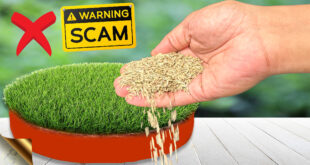In Today’s post, we will discuss on Composting types and basic concepts and requirements of a compost bin whether for home composting to recycle your kitchen waste or for large scale composting in farming.
WHAT IS COMPOSTING?
Composting is a natural process of breakdown or decomposition of various organic materials otherwise regarded as waste products and finally produces a nutrient rich product which is known as the compost.
WHY SHOULD YOU COMPOST?
Most of the solid wastes in our cities comprises of our yard waste and kitchen or food waste. By composting or recycling these items, it makes it possible to reduce the overall amount of waste being sent to landfills and mass-burn incinerators. The final compost, is nutrient-rich and can be used to amend poor soils and fertilize gardens instead of using chemical fertilizers which are hazardous to all organisms on earth.
TYPES OF COMPOSTING:
There are three types: aerobic, anaerobic (like Bokashi’s composting), and vermicomposting. Each one has its own pros and cons.
- AEROBIC COMPOSTING: In aerobic composting method, air or oxygen is introduced to help break down organic materials. The composting pile needs to be turned for aeration every other day. This can accomplished by using a fork tool or using a tumble style or barrel composter. We will discuss and demonstrate how to easily do aerobic and also anaerobic or bokashi’s composting later, after we discuss some fundamental concepts of composting.
- ANAEROBIC COMPOSTING: This is exactly opposite of aerobic composting. Actually some do not include this in composting and rather call it a fermenting process. Japanese method called Bokashi composting is the best example of anaerobic composting. Anaerobic composting takes almost no effort at all. Just add scraps into the composter, and leave it air tight for many days. Many people think Anaerobic composting stinks like hell but this is not true if done properly and this can be avoided with the use of Bokashi method which we will demonstrate and discuss later.
- VERMICOMPOSTING: Vermicomposting uses earthworms, oxygen and moisture to safely break down organic material with very less odours. Basically, worms do most of the job along with the bacteria. This method is the most preferred method due to its many advantages.
FUNDAMENTALS & REQUIREMENTS FOR COMPOSTING:
These basics are really important and please do not skip these points.
Well, Composting requires the following three components: 1. human management, 2. aerobic conditions, and 3. development of internal biological heat. Composting Process by organisms require four equally important components to work effectively:
- Carbon — for energy. And the microbial oxidation of carbon produces the heat. High carbon materials to be added to compost bin are generally brown and dry stuff like dried leaves, twigs, saw dust, charcoal and so on. We will discuss on the materials that can be added and those prohibited in the later episodes of this composting series. Well, the second ingredient is
- Nitrogen — which is essential to grow and reproduce more organisms to oxidize the carbon. High nitrogen materials generally tend to be green like the wet scrap from your kitchen like fruits and vegetables. We will also discuss on the importance of Carbon:Nitrogen ratio later on.
- Oxygen — for oxidizing the carbon and for the decomposition process. This is supplied by good aeration of the bin and also by turning the compost pile every other day.
- Water — All life needs water – that’s for the microorganisms and also the earthworms if you are vermicomposting. And Water in the right amounts is very important for decomposition process and to keep the temperature regulated. Too much or too little water is bad for composting.
The Composting microorganisms are introduced into the pile to start the process of decomposition by either adding a good quality garden soil or a manure like vermicompost or even cowdung manure. You also have many commercially available compost makers for this job.
Well, In our next postswe will list out the materials that can be added and those that are prohibited along with the some basics on the C:N or the Carbon:Nitrogen Ratio. Then we will demonstrate easy methods for both aerobic and Bokashi composting methods for home gardening.
 GKVKs – Gardening Tips and Store Gardening Tips and Store
GKVKs – Gardening Tips and Store Gardening Tips and Store



